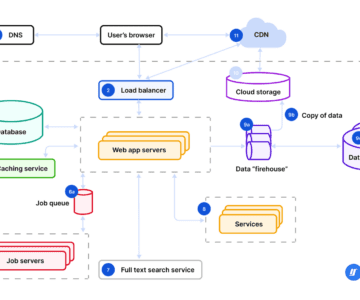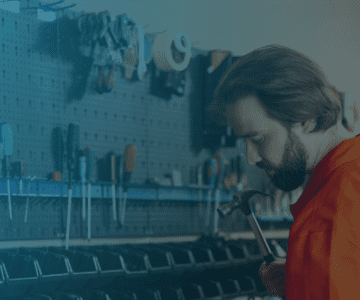Cost-effective, easy to deploy, and straightforwardly effective, beacons have become one of the most popular ways to engage with customers.
While decades ago the use of this technology was primarily seen in marketing and retail, in 2024, industries like healthcare, transportation, logistics, and many others are actively adopting beacons. This smart solution not only streamline business operations and helps gain more clients by providing real-time insights but also make a meaningful difference in patient care. For example, in healthcare, providers can use beacons to remind patients to take their medications and track the locations of patients in emergency rooms and large medical facilities.
Let's take a look at what the global market has to say about the rise of beacon technology.
If you’re seeking a technology that can help you reach more clients, improve customer experiences, and deliver greater value — all in a cost-effective way — beacon technology is the way to go. To simplify your journey, we've compiled a guide that covers everything you need to know about beacons.
In this article, you’ll discover:
- What is beacon technology
- How does it work
- The many types of beacons
- How they benefit companies across industries
- Pros and cons of the devices
- How technology would evolve
Let's get started!
What is Beacon Technology?
Beacon devices are at the heart of beacon technology. Part of indoor and outdoor positioning systems and Internet of Things (IoT) networks, beacons use proximity technology to detect human presence nearby and trigger preset actions to deliver informational, contextual, and personalized experiences.
How Do Beacons Work?
When a user walks past an area where a positioning system or IoT network with beacons is set up, the nearest beacon sends a code with a message to their mobile device. Then, the beacon recognizes the message pops up as a notification on a user's mobile device with a third-party or branded mobile app.
You need 3 things to make a beacon-based system work:
- At least one more beacon device
- Mobile app
- User's permission
Beacon technology offerings usually consist of a software development kit (SDK), back end management tools, and beacon devices. So, you will need software engineers to set up your positioning system, more so if beacons are part of a vast IoT network that includes other smart devices too.
As for the user permission, your users make the final decision on whether they will receive beacon-based notifications and use your positioning system. Beacon technology works only with a smartphone and mobile app, so users can simply opt for turning off Bluetooth. There are also people who use their smartphones without keeping Bluetooth on all the time.
To overcome this obstacle, you can ask your users to turn on Bluetooth for the full customer experience, or even excite your users by notifying them about the beacon-based positioning system, presenting it as an innovative solution, and explaining what benefits it holds for them.
As a result, beacon technology appears as less intrusive than the similar RFID (radio-frequency identification) and other engagement tools, enabling a user experience where a user has a choice to opt out.
BLE as Bluetooth Beacon Technology
BLE beacon technology relies on Bluetooth Low Energy (BLE) to transmit data and send out messages at regular intervals. BLE is a power-efficient Bluetooth technology developed for the Internet of Things applications and devices like beacons. With BLE, a beacon needs only one coin cell battery every three years, and the technology is 60 to 80 percent cheaper than the classic Bluetooth.
Types of Beacons
There is a wide array of beacons available for positioning systems of any type and scale. They differ in size, battery life, use cases, and level of resistance to exogenous factors. Here are the common types of beacons:
- Standard beacon (devices the size of a Wi-Fi router or smaller) for proximity solutions and indoor tracking.
- Portable/small beacon (the size of a credit card or big sticker) for asset tracking and proximity solutions.
- USB beacon (small, portable, quick to deploy) — beacons the size of a flash drive for asset tracking and proximity solutions.
- Video beacon — devices plugged into the back of a screen to deliver contextual visual information (for example, a user approaches a display in a food joint and shows personalized offers based on usage of the beacon-enabling app) as well as for digital signage.
- AI beacon. A machine learning-driven device that can detect different movements and gestures.
- Sticker beacon — the smallest of beacons, used for asset tracking.
- Parent beacon (the size of big Wi-Fi routers) is used to track other beacons, gather data and store it in the cloud, and more.
- Dedicated beacon — devices resistant to exogenous factors (dust, water, shattering, antistatic and UV) for indoor tracking and proximity solutions in harsh environments.
Most of the aforementioned beacon types emerged in the years since the inception of beacon technology to accommodate the business needs of different companies, so new ones may come into being in the future, giving companies new options to engage customers.
What Are Beacons Used For?
Beacon technology can improve the user experience both at the front and back end of almost any company, helping to streamline operations and gather data, drive sales, and deliver unique user experiences. Still, the retail and marketing industries benefit from beacons the most, as they are almost tailor-made for the two.
Front & Back End of Business
At the front end, for example, at a retail store, you can pair beacons with a custom app to notify shoppers about limited in-store offers, deliver personalized promotions, and provide navigation at vast retail locations.
Other Uses in Marketing:
- A new avenue for driving sales. You can pair beacons with mobile to deliver highly personalized location-based ads.
- One more way to collect data. Beacons can gather customer data that will help you create better, more personalized experiences, as well as gain additional insights into customers' behavior.
- New meaningful experiences for customers. Like RedBull's beacon stickers, some types of beacons give a lot of room to experiment and develop creative solutions that your customers will remember for a long time.Beacons are used in retail settings to send personalized promotions, discounts, and advertisements to customers’ smartphones when they are near a specific product or within a store. Retailers use beacons to guide customers through stores, helping them find products or providing information about sales and special offers.
Other industries that can leverage beacon technology:
- Healthcare ((patient tracking and safety, and equipment management)
- Hospitality (navigation, gamification, smart hotel rooms)
- Sports (navigation on big arenas, proximity marketing)
- Logistics & warehousing (asset tracking, security)
- Transportation (navigation, passenger guidance, vehicle tracking, transit efficiency)
- Smart home development (beacons can provide navigations to guests at vast properties; security)
- Construction (geofencing perimeters for projects in the middle of nowhere)
- Events (gamification, navigation, schedule notifications)
- Education (interactive learning, navigation)
Video beacons are the go-to example when it comes to showcasing the high value of beacon technology. For example, you can use video beacons to deliver contextual information and provide navigation at a hotel or resort. Such experiences are fresh, save time, and imbue the customer journey with small but memorable moments.
 Conclusion: The Future of Beacons
Conclusion: The Future of Beacons
According to Global Market Insights, the beacon technology market is projected to surpass $25 billion in 2025.
Back in 2018, Google started sending out free beacons to small businesses across the U.S., helping them stand out to nearby customers. It was a game-changer, and since then, beacons have only gotten smarter. By 2019, Estimote introduced the AI beacon, pushing the boundaries with features like contextual awareness and real-time data processing.
Now, in 2024, beacons are everywhere. They’re guiding travelers through busy airports and train stations, optimizing public transit with real-time vehicle tracking, and providing a non-intrusive, spot-on way to engage with customers in a world overloaded with content.
Taking all this into account, it is safe to assume that more and more business locations will have beacons installed in them in the coming years. Although long-term projections might not reflect reality in the end, there are no visible hurdles on the way of large-scale beacon technology adoption. After all, beacons demand little to invest, are easy to set up and manage regardless of business scale, and bring clear, straightforward benefits to business across industries. Why not leverage them?
At Intellectsoft, we empower companies and their workforce with cutting-edge transformative solutions and data-driven insights. Are you and your organization ready to shift the mindsets and get the most out of innovations?
Talk to our experts and find out more about the custom solutions and how your business or project can start benefiting from them today!
With over 17 years of experience, Intellectsoft has been a trusted partner for businesses in industries like Fintech, Healthcare, Construction, Hospitality, Logistics, and eCommerce. Our global team of tech experts is dedicated to delivering solutions that fit your needs perfectly — whether you’re creating a new product, upgrading a system, or adopting the latest technologies.




















